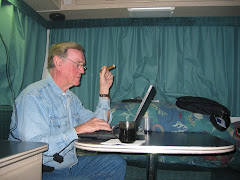
The walls contain the names of all Australian war dead. Poppies are placed by family and friends to commemorate important dates.

The imposing memorial, Tomb of the Unknown in center, memorial walls on each side and a museum in the vast space underneath.
Excerpted from my book OUR SUMMER IN AUSTRALIA AND NEW ZEALAND, Amazon.com
The Australian War Memorial, is located directly opposite from Parliament House. These two buildings face each other in a dramatic way. Politicians, from there exalted hilltop site, deliberating on decisions to go to war, need only to look out their window and across the lake at the imposing War Memorial, to be reminded of the consequences. I have visited “Tombs of the Unknown Soldier” in many countries… France, Great Britain, United States, Italy, Turkey and so on. The Australian War Memorial surpasses them all, not only in its respect for the hardships of those who served — particularly in the two World Wars of the last century— but also in the direct, realistic and unadorned manner in which the story of the combatant is told. As in other Tombs of the Unknown, Australia’s is also rendered tastefully and with dignity.
However, unlike the Tomb of the Unknown at Arlington Cemetery, this memorial is without an interposing honor guard, and is covered from the elements while still remaining open, allowing anyone to approach and pay their respects. Also, and very wisely, the Australian Tomb contains the remains of only one serviceman, a soldier from the First World War, representing every unknown serviceman from all of Australia’s conflicts. The gravesite is symbolic, not specific. Unlike the United States, which has an Unknown Soldier gravesite for WWI, WWII, and Korea, resulting in an ongoing controversial opening of the graves, to subject the remains to modern DNA identification analysis. The Australian example is dignified, complete, and without political sentiment.
What further distinguishes the Australian War Memorial is the amazing museum located beneath the building. It’s a vast space, even containing twin engine bombers from
WWII, and realistic displays of a soldier’s life, from Australia’s first overseas encounter in the Boer war, through their participation in Vietnam. It is not simply a collection of captured enemy equipment, but more a paean to the serviceman’s life in combat, told through hundreds of photographs and large dioramas. It doesn’t glorify. It doesn’t put flag rank officers on pedestals. It does honor genuine heroism. You leave shaking your head at what men, and in several examples, women, endured. Also, you better understand the Australian concept of “mateship”, and everyone having a “fair go.” Of course, men from other nations also bond together to mutually endure the hardships of prolonged combat, but it comes through so forcefully in the ANZAC photographs, reinforcing the statement that, at Gallipoli, the Australian nation was born.
By combining their tomb of the unknown soldier with a memorial museum, and in such a dignified, respectufl and somber fashion, the Australians have got it right, and set an example for others, including the United States.


